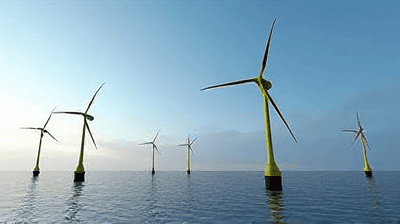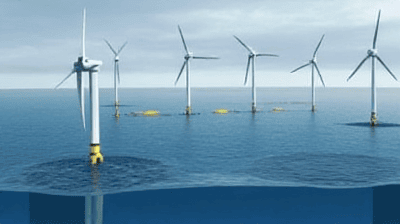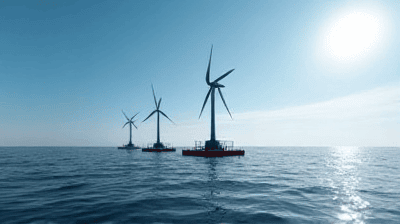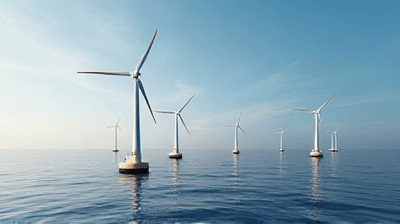
The pursuit of clean and sustainable energy has gained unprecedented urgency in light of climate change and the thirst for renewable resources. As nations transition from fossil fuels to renewable energy sources, innovative technologies are emerging to harness the untapped potential of nature. Among these advancements, floating wind farms stand out as a revolutionary solution to exploit deep water wind energy.
Wind energy is a form of solar energy that converts kinetic energy from wind into electricity. Traditional wind farms utilize tall turbines installed on land or shallow waters where wind speed is optimal. These turbines convert wind motion into electrical power through the movement of blades connected to generators.
Floating wind farms represent a significant leap forward, enabling wind energy generation in deep water locations where traditional fixed-bottom turbines cannot be installed. By floating on the ocean surface, these turbines can access more consistent and stronger winds, which are critical for maximizing energy production.

Floating wind farms use buoyant platforms to support turbines in deep water. These platforms are designed to stay stable in turbulent marine environments while allowing significant flexibility. The primary components of a floating wind farm include:
Floating Platform: The buoyant structure that supports the turbine and keeps it stable in deep waters. Platforms can come in various designs, including semi-submersible, spar-buoy, and tension-leg platforms.
Turbine: The wind turbine itself, usually similar in design to those used in traditional wind farms, converts wind kinetic energy into mechanical energy, which is later converted into electricity.
Mooring System: This system anchors the floating platform to the seabed, ensuring stability and positioning while allowing movement with ocean currents and waves.
Electrical Infrastructure: Cables transmit the generated electricity from the turbines to shore, where it can be integrated into the electrical grid.
Floating wind farms offer several advantages over traditional fixed-bottom wind farms:
Access to Higher Wind Speeds: Deep water locations typically have stronger and more consistent winds, resulting in higher energy production potential.
Reduced Impact on Coastal Areas: By placing turbines further offshore, floating wind farms minimize visual and environmental impacts on coastal communities and ecosystems.
Utilization of Unused Areas: Many coastal regions have deep waters that are unsuitable for fixed-bottom turbines but ideal for floating installations, allowing for expanded energy generation potential.
Modular Design: Floating wind farms can be deployed in modular arrays, making it easier to scale up installations as technology and market conditions evolve.
The development of floating wind technology is rapidly progressing worldwide. Several countries are leading the way in research, testing, and deployment of floating wind farms:
United States: The U.S. government has prioritized offshore wind energy development and is investing in floating wind technologies. Projects such as the WindFloat Atlantic pilot project showcase the country's commitment to harnessing deep water wind potential.
United Kingdom: The UK is a pioneer in offshore wind energy and has invested heavily in floating wind farms. The Kincardine Floating Wind Farm off the east coast of Scotland, which consists of multiple floating turbines, is a notable example.
Norway: Norway has long been at the forefront of maritime engineering and is leveraging its expertise to develop floating wind farms. The Hywind Scotland project, the world’s first commercial floating wind farm, has demonstrated the technology's viability.
France: France is increasingly investing in floating wind projects, including the EOLMED project, which aims to install floating wind turbines off the Mediterranean coast.
Japan: Japan is exploring floating wind technology to diversify its renewable energy portfolio after the Fukushima nuclear disaster. The Fukushima Forward project showcases the potential of floating turbines in the region.
As of 2023, the global capacity for floating wind farms remains modest but is growing rapidly. Industry estimates predict that capacity could reach over 70 gigawatts by 2040, driven by technological advancements, decreasing costs, and increased regulatory support. This growth indicates the potential for floating wind farms to significantly contribute to global renewable energy targets.

While floating wind farms offer immense potential, there are several technical challenges to overcome, including:
Mooring and Maintenance: Ensuring that mooring systems remain stable in harsh marine environments requires advanced engineering. The maintenance of floating turbines can also pose logistical challenges due to their remote locations.
Weather Considerations: Floating wind turbines must be designed to withstand extreme weather conditions, including high winds and waves, which can impact reliability and operational lifespan.
Cost and Investment: The initial costs of developing floating wind farms can be significantly higher than traditional offshore wind farms. Securing investment and reducing costs through economies of scale remain crucial challenges.
Developing floating wind farms involves various environmental and regulatory considerations:
Environmental Impact Assessments: Conducting thorough assessments to evaluate potential impacts on marine ecosystems, including fish habitats and migratory birds, is essential for gaining permits and public acceptance.
Regulatory Frameworks: Establishing clear regulations and frameworks for permitting and operating floating wind farms can facilitate industry growth. Governments must work collaboratively with stakeholders to create supportive policies.
Public Perception: Engaging with local communities and addressing concerns about visual impacts, noise, and potential environmental effects are key to building public support for floating wind developments.
Ongoing research and innovation in floating wind technology are essential for its future success. Key areas of focus include:
Improving Materials: Developing lightweight, durable materials that can withstand the harsh marine environment will enhance the performance and longevity of floating turbines.
Advanced Engineering Solutions: Innovative designs for floating platforms and mooring systems will help address challenges related to stability, maintenance, and cost-effectiveness.
Hybrid Energy Systems: Exploring the integration of floating wind farms with other renewable energy sources, such as solar and wave energy, can create hybrid systems that maximize energy output and reliability.
Collaboration between governments, private industry, and research institutions is vital to advancing floating wind technology. By pooling resources, sharing knowledge, and fostering innovation, stakeholders can collectively address challenges and unlock the full potential of floating wind farms.
The growth of floating wind technology presents numerous economic opportunities, including:
Job Creation: Developing and maintaining floating wind farms can create a wide range of jobs in engineering, manufacturing, and maintenance, contributing to economic growth.
Emerging Industries: The demand for floating wind technology is likely to give rise to new industries, such as specialized engineering services, manufacturing of components, and supply chain development.
Energy Security: Investing in floating wind farms can enhance energy security by diversifying energy sources and reducing dependence on fossil fuels.
As countries strive to meet ambitious renewable energy targets, floating wind farms can play a crucial role in achieving these goals. With their ability to harness deep water wind resources, floaters can significantly contribute to reducing carbon emissions and addressing climate change challenges.

Floating wind farms represent a transformative solution for harnessing renewable energy from deep water sources. With their access to stronger and more consistent winds, reduced environmental impacts on coastal areas, and modular design, floating wind technology holds the potential to revolutionize the offshore wind industry.
While challenges related to engineering, environmental impacts, and costs remain, ongoing innovations and collaborations are paving the way for more extensive deployment of floating wind farms. As countries and industries harness this game-changing technology, floating wind farms can significantly contribute to the global transition towards sustainable energy, ultimately helping to combat climate change and secure a cleaner, greener future for generations to come.